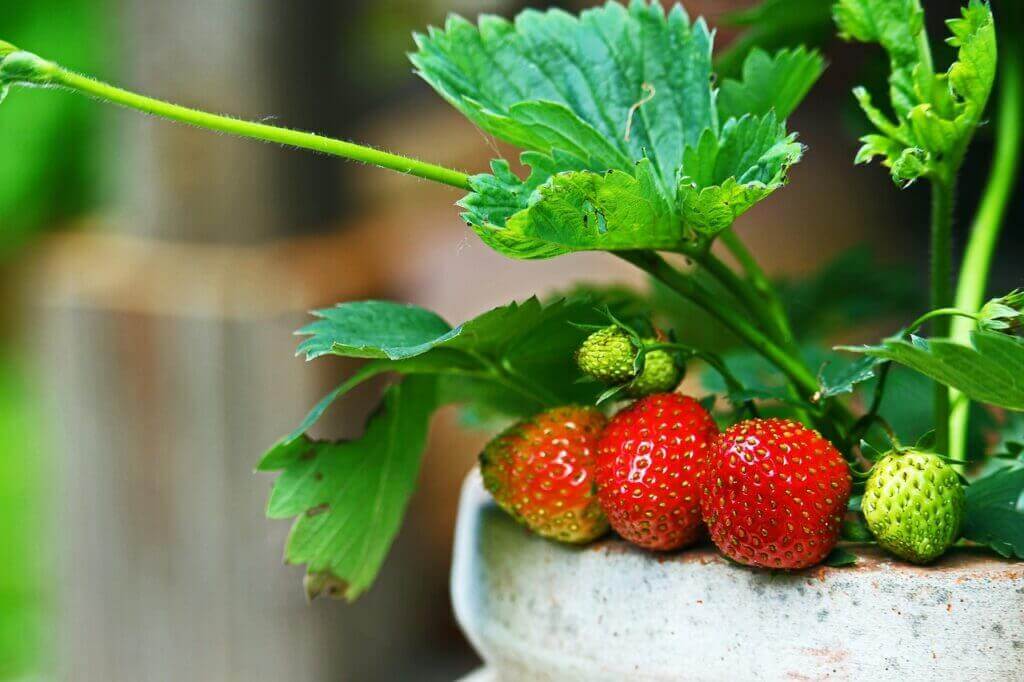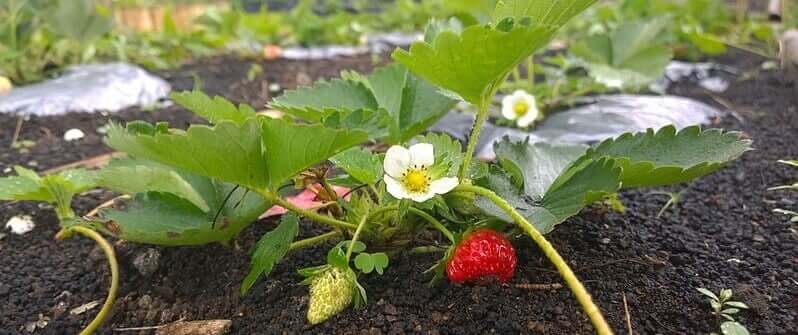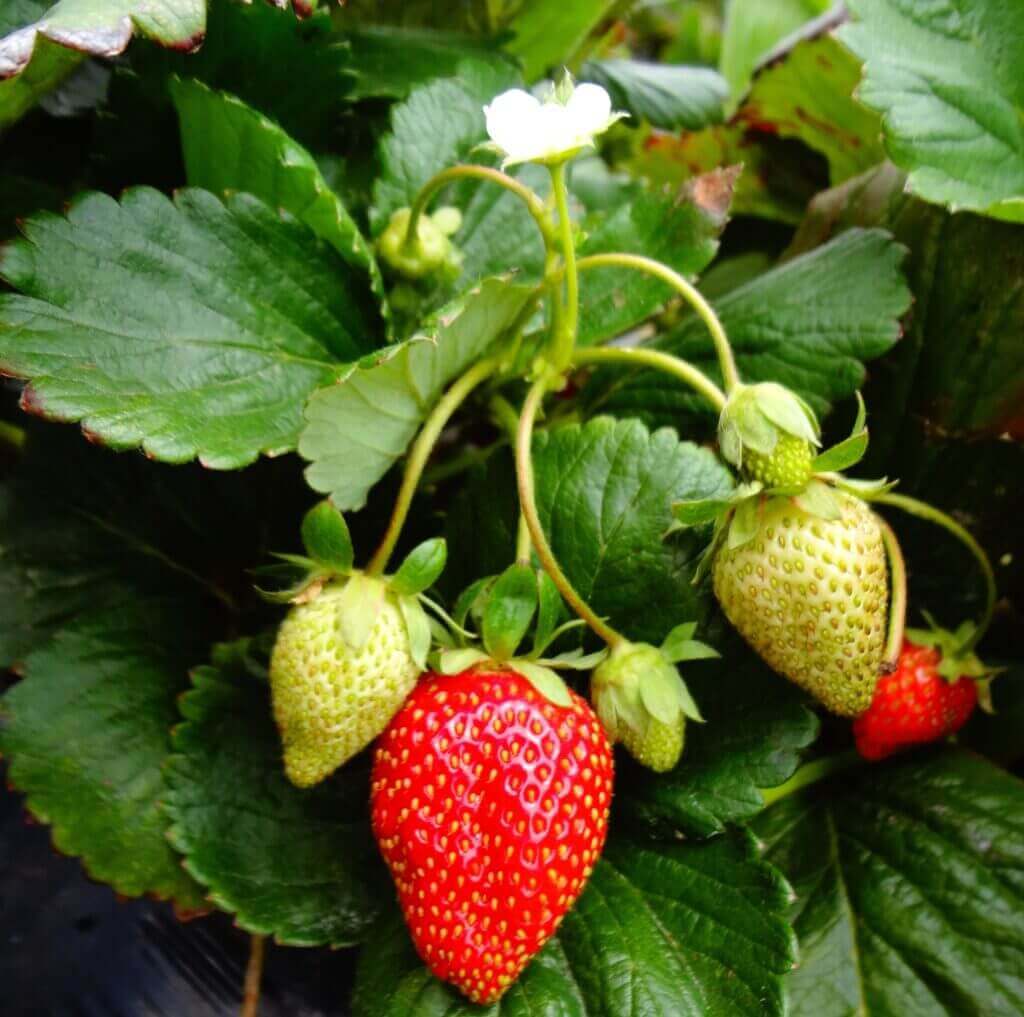The Ultimate Guide to Growing Strawberries in South Africa
How to grow strawberries:
Strawberries are a versatile and rewarding fruit to grow. They can be planted directly in the ground or in containers and can be grown from runners, plantlets or seeds making them suitable for various garden setups. Before you start, let’s explore the step-by-step process of growing strawberries.
Preparing Garden Beds for Strawberries
Soil preparation: Before you plant your strawberries prepare the garden beds properly. Strawberries thrive in well-draining soil. South African gardeners often have sandy soils, so consider adding organic matter like compost to improve soil structure. Add bonemeal and organic fertiliser into the soil for good results, remember Strawberries prefer slightly acidic soil.
Choose the Right Location: Select a sunny spot for your strawberry bed that receives at least 6 hours of sunlight daily. Adequate sun is crucial for healthy berry production.
How to Grow Strawberries from Plants
Planting strawberries involves careful consideration of the right location, spacing, and depth. We’ll walk you through these critical steps to ensure your strawberry plants have the best start.
Plant Depth: When planting strawberries, make sure to position them at the same depth as they were in their nursery pots. Avoid burying the crown (the point where the leaves meet the roots)
Spacing: Plant your strawberries in rows, leaving about 30 Cm between plants and around 1M between rows. This spacing allows for adequate air circulation. Proper pacing between plants is crucial for good air circulation, which helps prevent diseases. Follow the recommended spacing based on the variety you’re planting.
Mulching: Utilizing mulch in your garden aids in preserving moisture, hindering the growth of weeds, and maintaining the cleanliness of your berries. It is recommended to apply a generous layer of mulch, at least 10 centimeters thick. Historically, straw was the common choice for mulch, which is how strawberries got their name. Mulch serves the dual purpose of elevating fruit off the ground and safeguarding it from dirt, potential damage, and fungal infections. Mulching alternatives for growing strawberries include options like disease-free grass clippings, pine needles, leaves, or newspaper strips.
Watering: After planting, water your strawberry plants thoroughly to help them establish their roots and to settle loose soil.
How to Grow Strawberries from Seeds
When to plant strawberry seeds?
Plant strawberry seeds in the spring, the best time to do so would be between late August and the first week of November, avoid sowing later than this. Good timing provides the best conditions for successful germination and healthy growth if you want to plant strawberries later in the season rather than grow them from plantlets.
How to plant strawberry seeds – Step by Step
Step 1: Seed selection
Start by selecting high-quality strawberry seeds from a reputable source. Consider factors such as the variety you prefer and the seed’s disease resistance. Strawberry ‘Florian’ is a good strawberry variety available in South African nurseries.
Step 2: Seed planting
You’ll need seed trays or small pots filled with a suitable seed-starting mix. The mix should be well-draining to prevent waterlogged soil.
To begin, prepare by filling your seed trays with a coir, peat, or germination mix. Plant one seed per compartment and cover it very lightly, or almost not at all. Keep these seeds consistently moist, ensuring they never dry out – germination is the phase your strawberries life when it is most vulnerable.
Step 3: water and maintain soil moisture
Ensure the soil remains consistently moist but not waterlogged. Water gently, so as not to disturb the seeds, a spray bottle is always handy when planting fine seeds like strawberries. Cover the trays or pots with a clear plastic dome or plastic wrap to create a mini greenhouse effect that keeps the humidity high around the seeds until they germinate.
Step 4: Germinating strawberry seeds
Place the trays or pots in a warm location with indirect sunlight. Strawberry seeds typically take about 2-4 weeks to germinate. Once you see the seedlings emerging, remove the plastic cover and place the containers in a location where they can receive direct sunlight for at least 6-8 hours a day.
Step 5: Transplanting strawberries
When the seedlings have developed a few true leaves and are robust enough, it’s time to transplant them. It’s important to make sure the little plants are large and strong enough that you don’t damage them during transplanting. Carefully separate the seedlings and transplant them into individual pots or directly into the garden bed. Be gentle to avoid damaging the young plants.
Step 8: Strawberry seedling care and maintenance
Provide ongoing care for your strawberry seedlings. Ensure they receive adequate water to keep the soil consistently moist. Watch out for signs of pests like slugs and birds, as they are often attracted to strawberries and yes even the little seedlings. Protect the plants as needed and check on them regularly. Prevention is better than cure.
Step 9: Monitoring and patience
Be patient, it may take some time for your strawberry plants to mature and produce fruit. Keep an eye on their growth and make sure to provide proper care as they develop into healthy, fruit-bearing plants.
How to Grow Strawberries in a Pot or Container?
If you have limited garden space or want to enjoy strawberries on your balcony or patio, growing strawberries in pots is a fantastic option.
Choosing the right strawberry pot: Opt for a container with adequate drainage holes to prevent waterlogging. Strawberry pots or hanging baskets are excellent choices, maybe even consider growing them in an old gutter on the wall, this makes a pretty display and allows the strawberries to hang over the side so they don’t rot on the soil surface.
Potting mix for strawberries in containers: Use a high-quality potting mix that provides good aeration and drainage. Strawberries have shallow roots, so a well-draining mix is essential. Adding some compost to the mix can enhance soil fertility. Fill the container with the potting mix, leaving about 2 inches of space from the top to allow for watering and mulching.
Planting strawberries in containers: Position your strawberry plants in the pot, ensuring they have room to grow and cascade over the sides. Plant the plants at the same soil depth as they were in their pots or seedling trays and gently firm the soil around the base of the plant into place, always water deep after a new planting.
Watering strawberries in containers: Container-grown strawberries may need more frequent watering than those in the ground. Keep the soil consistently moist, but avoid overwatering. Check soil moisture regularly by digging your finger into the top bit of soil.
Location is key: Place your container in a location that receives a minimum of 6-8 hours of direct sunlight daily. If you’re growing strawberries indoors make sure they get enough light and air movement, an unhappy plant is susceptible to disease and won’t produce ample quality strawberries.

How to Care for Strawberry Plants
Taking proper care of your strawberry plants will ensure a bountiful harvest.
Watering strawberries:
Strawberries require consistent moisture, particularly during their growing and fruiting seasons. Adequate watering is vital for plump, juicy berries. It’s best to water at the base of the plants to prevent the foliage from getting wet. Wet leaves can lead to fungal diseases like powdery mildew and gray mold. Maintain a regular watering schedule to ensure the soil remains consistently moist but not waterlogged.
Mulching strawberries:
Mulch is a must when growing strawberries. Applying a layer of organic mulch, such as straw or pine needles, around your strawberry plants offers several benefits. Mulch helps retain soil moisture, reducing the frequency of watering and conserving water. It also acts as a barrier that keeps the berries clean, preventing soil splashes that can make the fruits dirty and avoiding contact between the soil and strawberries that could lead to rot or pest damage. Additionally, mulch suppresses weed growth, reducing competition for nutrients and water.
Fertilising strawberries:
Fertilisation is important to provide your strawberry plants with the necessary nutrients for healthy growth and fruit production. Use a balanced fertilizer with equal ratios of nitrogen, phosphorus, and potassium (N-P-K). The specific ratio may vary depending on the manufacturer’s recommendations, so be sure to follow the instructions on the product label. Typically, it’s best to apply the fertilizer in the spring as the plants start to grow and then again after the first harvest. A water soluble fertiliser is a great alternative to fertise strawberries, especially if you are growing them in containers.
Trimming and pruning strawberries :
Regular pruning encourages your strawberry plants to channel their energy into fruit production rather than excessive vegetative growth. Remove runners, which are long stems that extend away from the main plant. By eliminating runners, you encourage the plant to focus on producing more berries. Additionally, trim off any dead or diseased leaves to maintain plant health and improve air circulation, reducing the risk of diseases.
Strawberry winter care:
In regions with cold winters protect your strawberry plants from frost and freezing temperatures. Before the onset of winter, cover your plants with frost cloth or a layer of straw or leaf mulch. This protective cover acts as insulation, safeguarding the plants from extreme cold and frost damage. Uncover them in the spring as temperatures rise, allowing the plants to resume growth and fruiting.
By following these detailed care instructions, you’ll provide your strawberry plants with the best possible conditions for healthy growth and a productive strawberry harvest. Proper care helps to maximize the quantity and quality of your homegrown strawberries.
How to Pick and Harvest Strawberries
When to pick strawberries – harvest timing:
The most rewarding moment in growing strawberries is the harvest, and to enjoy the best flavor and quality, timing is crucial. Strawberries are ready to pick when they are fully red and plump and emit a sweet, fragrant aroma. Ripe strawberries will have a deep red color, and the fruit should be firm to the touch. Allow berries to ripen on the plant for the best harvest, avoid picking unripe green strawberries as they won’t develop their full sweetness and flavor.
How to pick strawberries:
To ensure your freshly harvested strawberries are in pristine condition, it’s essential to handle them with care. Gently pinch the stem just above the berry with your fingers or use scissors or shears. This method allows the berry to come off easily without causing damage or bruising. Be delicate when picking strawberries, as any bruising can reduce their shelf life and visual appeal.
Harvest strawberries in a container:
Select an appropriate container or basket for harvesting your strawberries. It’s best to use a shallow container to prevent the berries from being squished or stacked on top of each other, which can lead to bruising and spoilage. Containers with ventilation or small holes can help maintain airflow and reduce moisture buildup, further preserving the berries’ freshness. As you collect the strawberries, place them gently in the container to keep them in prime condition until you’re ready to enjoy their delectable sweetness. Refrigerate or freeze your strawberries to elongate their shelflife.
How to Prevent Strawberry Pests and Diseases
Aphids on strawberries:
Aphids are small, soft-bodied insects that can harm strawberry plants by feeding on their sap. To control aphid populations, you can use insecticidal soap, which is a low-impact solution that effectively manages these pests. Alternatively, you can introduce natural predators like ladybugs into your garden. Ladybugs are known to feed on aphids and help keep their numbers in check.
Slugs and snails on strawberries:
Slugs and snails can be particularly damaging to strawberries. They target both the fruit and the leaves. To manage these pests, consider using slug and snail baits or traps. These baits are designed to attract and capture these creatures, reducing their impact on your strawberry plants.
Rot on strawberries:
Botrytis rot is a fungal disease that can affect strawberries, especially in conditions with poor air circulation. To prevent its spread, ensure your strawberry plants have adequate space between them to allow for proper airflow. Avoid overhead watering, as moisture on the leaves can promote the development of this disease. Drip irrigation or soaker hoses are better choices for watering strawberries, as they keep the foliage dry.
Gray Mold on strawberries:
Gray mold is another common fungal disease that can afflict strawberries. To manage this disease, practice proper pruning and thinning of your strawberry plants. By maintaining good spacing between plants, you reduce humidity and allow for better air circulation, which can deter the spread of gray mold. Additionally, regularly inspect your strawberry plants and promptly remove any infected berries to prevent the disease from spreading further.
Birds eating strawberries:
Birds are fond of ripe strawberries, making them a common threat to your crop. To protect your strawberries from birds, consider using bird netting. Bird netting is an effective barrier that prevents birds from accessing your berries. You can also employ bird scare devices, like reflective tape or wind chimes, to deter birds from approaching your strawberry patch.
By identifying these common strawberry threats and implementing the appropriate prevention and management measures, you can significantly reduce the impact of pests and diseases on your strawberry plants, ensuring a healthier and more bountiful harvest.
Companion Planting for Strawberries
Companion planting is a valuable strategy for optimizing the health and productivity of your strawberry garden. Here’s a closer look at companion plants that can benefit your strawberry patch:
Companion herbs for strawberries:
Planting herbs such as basil, thyme, and oregano alongside your strawberries serves a dual purpose. These herbs not only enhance the flavor of your strawberries but also deter common pests like aphids. The aromatic qualities of these herbs can help repel aphids and other unwanted insects, promoting a healthier strawberry crop. Plant borage with your strawberries. The flowers will attract bees and as a result, improve pollination of your strawberries.
Avoid growing strawberries near Mint, Rosemary, and Thyme, they don’t like each other.
Companion flowers for strawberries:
Marigolds and nasturtiums are excellent companions for your strawberry patch. These vibrant and attractive flowers not only add visual appeal to your garden but also serve as natural pest repellents. Marigolds are known for their ability to repel various garden pests, including nematodes and aphids. Nasturtiums have a similar effect, keeping pests at bay while also acting as a trap crop, luring certain pests away from your strawberries.
Nitrogen-Fixing plants to grow with strawberries:
Legumes are beneficial companions for strawberries due to their nitrogen-fixing properties. These plants have the ability to convert atmospheric nitrogen into a form that can be used by other plants, which helps improve soil quality. By planting nitrogen-fixing plants around your strawberries, you enrich the soil with this essential nutrient. Nitrogen is vital for healthy plant growth and can lead to more robust strawberry plants and higher yields.
By strategically incorporating these companion plants into your strawberry garden, you can create a harmonious and thriving ecosystem. Not only will you enjoy the benefits of enhanced pest control and improved soil quality, but you’ll also have the pleasure of a more diverse and visually appealing garden.
Troubleshooting Strawberry Growing Problems:
Not everything always goes smoothly in the garden. Growing strawberries can sometimes come with challenges, but troubleshooting common issues can help you maintain a healthy and productive strawberry garden. Here are solutions for typical problems you might encounter when growing strawberries:
Yellowing Leaves:
Yellowing leaves can indicate a nutrient deficiency or overwatering. To address this, first, assess your soil’s nutrient levels and consider adding balanced fertilizer if necessary. Be mindful of your watering routine; strawberries prefer consistently moist but not waterlogged soil.
Small or Deformed Strawberries:
Poor fruit development may result from inadequate pollination or irregular watering. Ensure you maintain even moisture levels by avoiding both drought and overwatering. If you suspect pollination is an issue, consider hand-pollinating your strawberries by gently transferring pollen from flower to flower with a small brush. Or grow them alongside flowers known for attracting pollinators to the garden.
Strawberry Runner Overgrowth:
Runners, while important for strawberry propagation, can sometimes overtake your strawberry bed and hinder fruit production. To manage this, trim or redirect runners to ensure they don’t monopolize the plant’s energy. By pruning excess runners, you encourage the plant to put more effort into producing berries.
A Conclusion on how to Grow Strawberries:
In your quest to grow the most delectable and succulent strawberries in South Africa, you’ve now been equipped with the ultimate guide to transform your garden into a strawberry paradise. Whether you’re starting from seeds or nurturing established plants, our comprehensive guide covers every step from preparation to harvest, ensuring your strawberry journey is fruitful and rewarding. You’re now ready to embark on your strawberry-growing adventure. The sweet, sun-ripened rewards are just around the corner.
As you cultivate your own strawberry patch, remember that patience and a touch of green-thumb magic will yield the most delicious and juicy strawberries for you, your family, and your friends to savor. With a bit of care, you’ll enjoy the fruits of your labor and the taste of a South African summer in every bite.



































